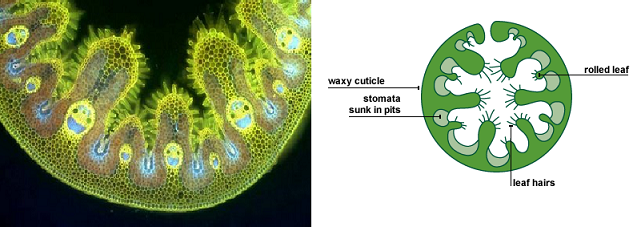Many xerophytes have their stomata located in pits, which reduce air movement, producing a microclimate of still, humid air that reduces the water vapour potential gradient and so reduces transpiration. Example: Cacti
Many xerophytes have reduced numbers of stomata, which reduce their water loss by transpiration but also reduces their gas exchange capabilites.

Comments
No comments have yet been made